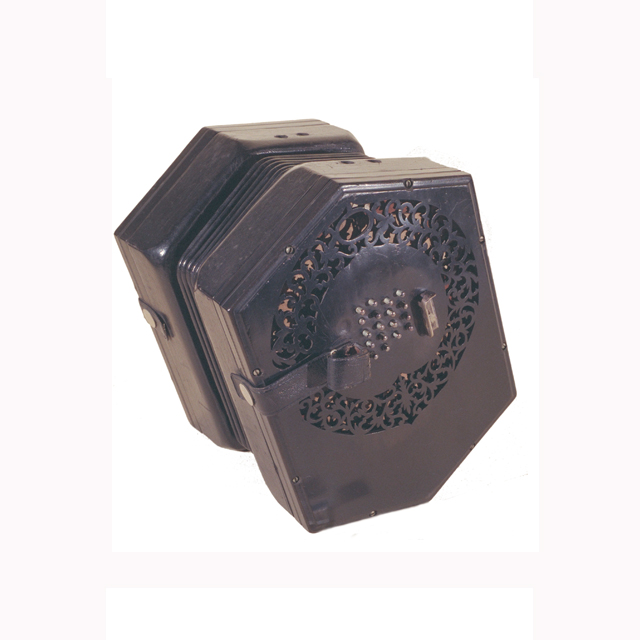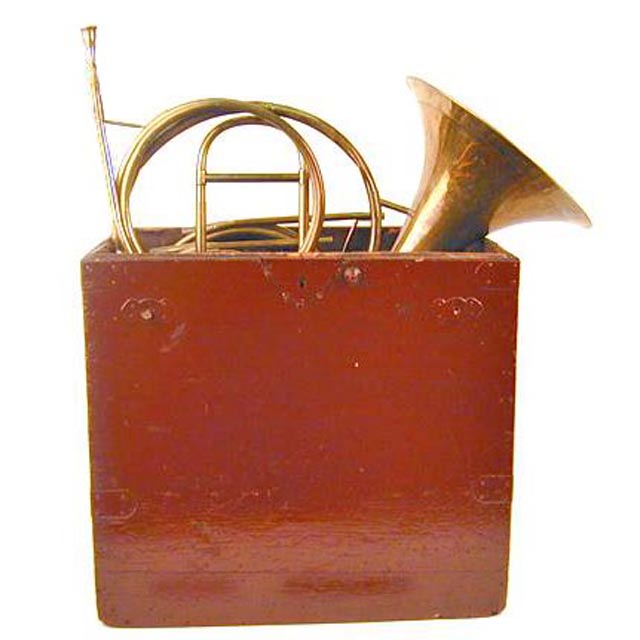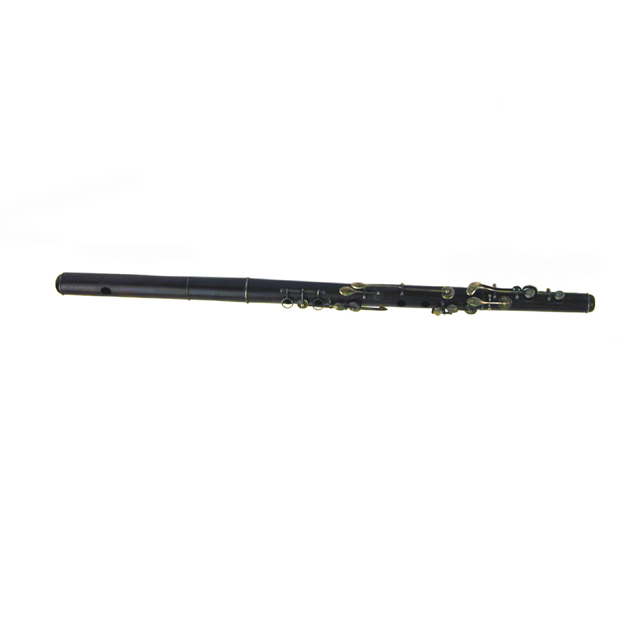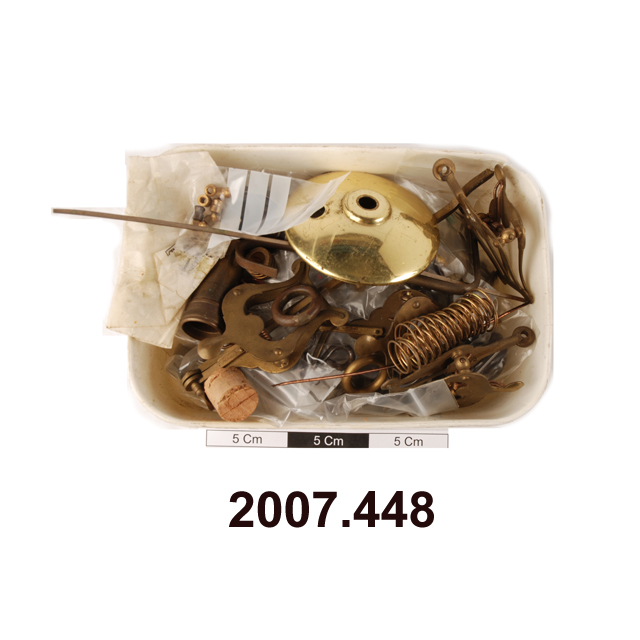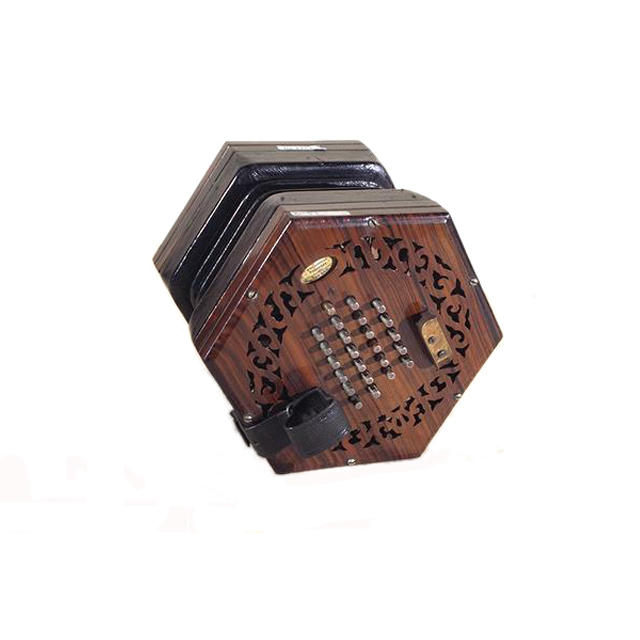
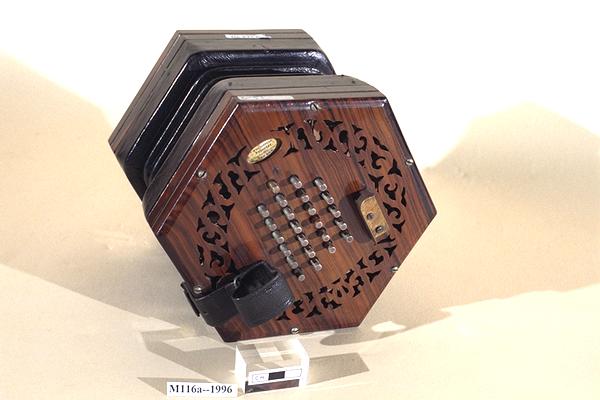
English system concertina. Serial number 3756. Oval paper label: 'By Her Majesty's Letters Patent, C. Wheatstone, Inventor, 20 Conduit St., Regent St., London.' Bellows stamped: 'R Whitten.' Rosewood ends built to standard width: six one quarter inches between parallel sides. Backing (pine) beneath fretwork absent; bevelled edge. Forty eight silver-capped metal buttons, bushed. One original green leather strap and one later black leather strap. Nickel screws. Four-fold leather bellows now painted black. Round-end mixed steel and brass action reeds. Hexagonal mahogany case.
In 1844 Charles Wheatstone (1802-1875), best known for his work in the field of physics, patented the 48-button English-system concertina. The instrument had already been in production for some years following his 1829 patent for the symphonium, a free reed mouth organ. A bellows-blown model was shown in an illustration accompanying the 1829 patent. Charles Wheatstone's family had been involved in the musical instrument trade for some years, and his brother, William Dolman Wheatstone, joined the firm in 1837. He became its proprietor between 1847 and 1866, when Charles Wheatstone gave up his involvement in the company to concentrate on his scientific work, for which he was knighted and made a Fellow of the Royal Society. The following information is recorded regarding the purchase of this instrument in the ledgers of the Wheatstone & Co. concertina factory (http://www.horniman.info): 2 Sep 1851: Miss Binfield [paid £]10.5.3 (C1047, p.26).




